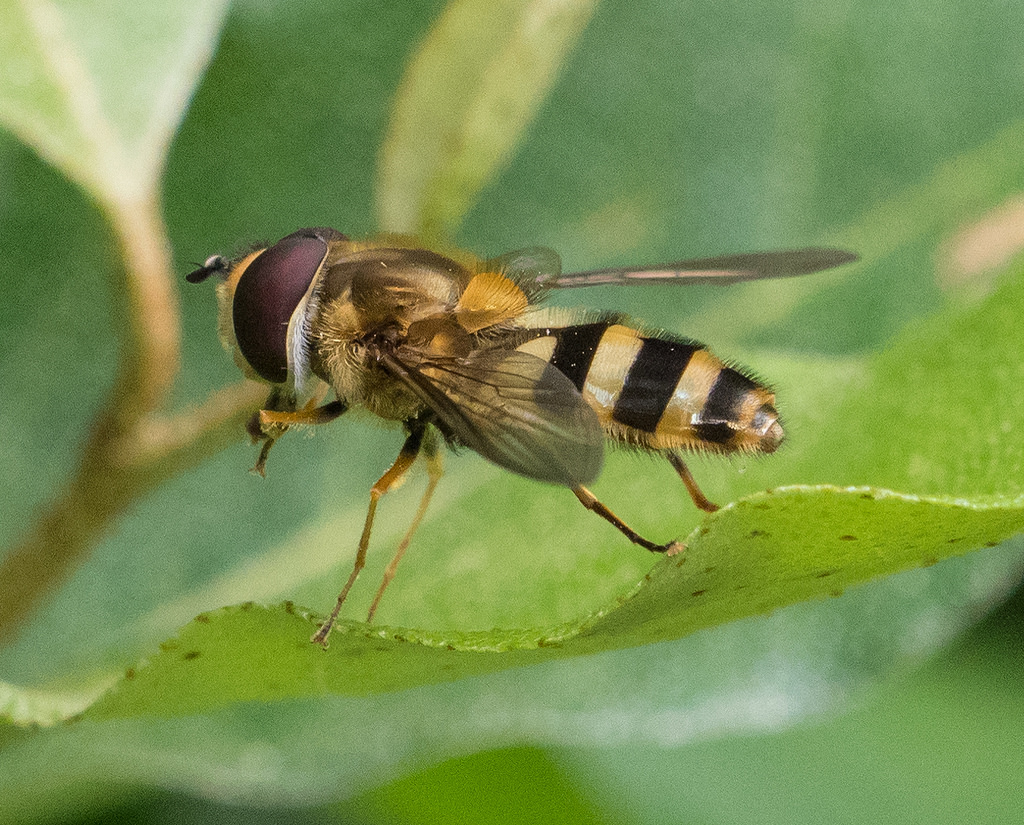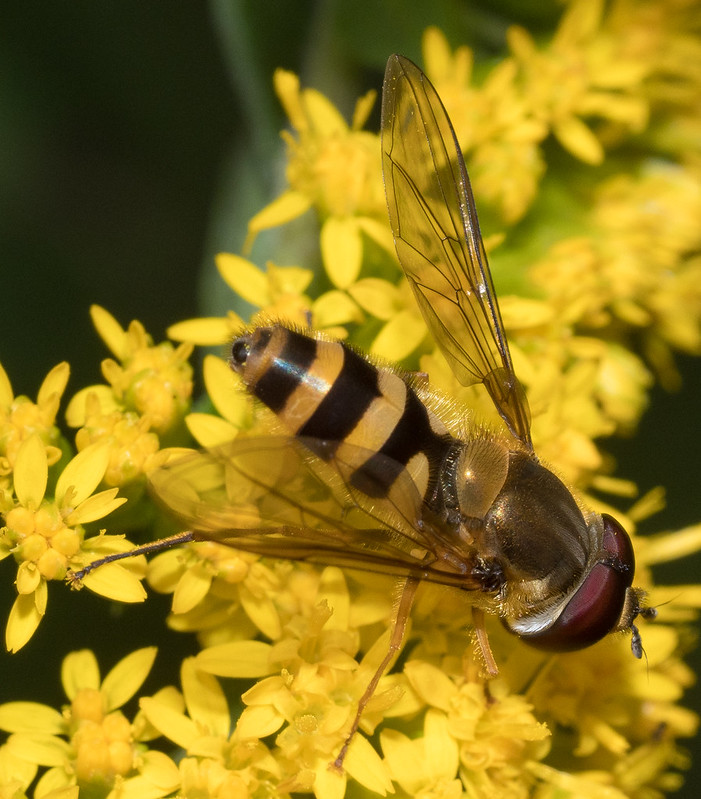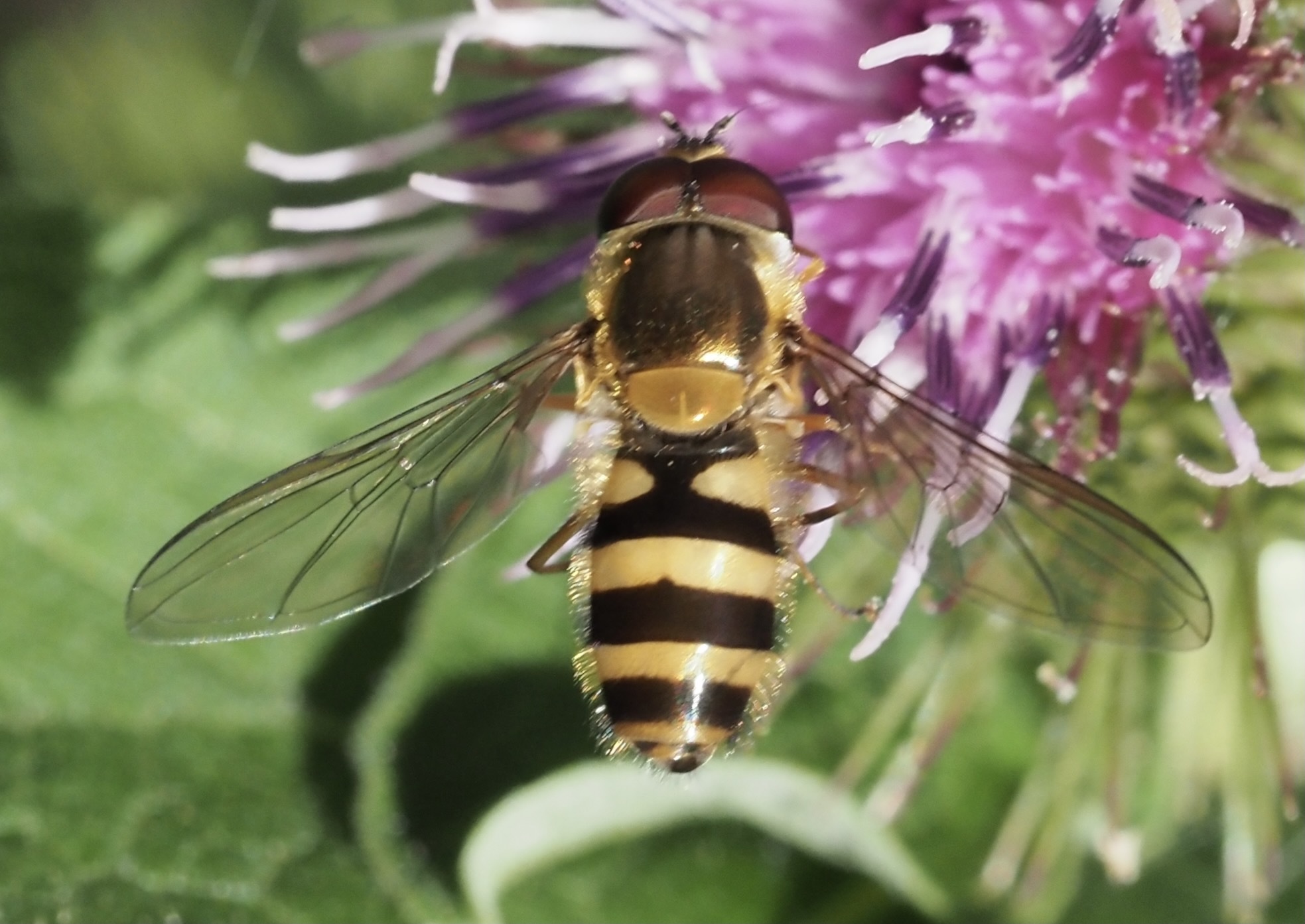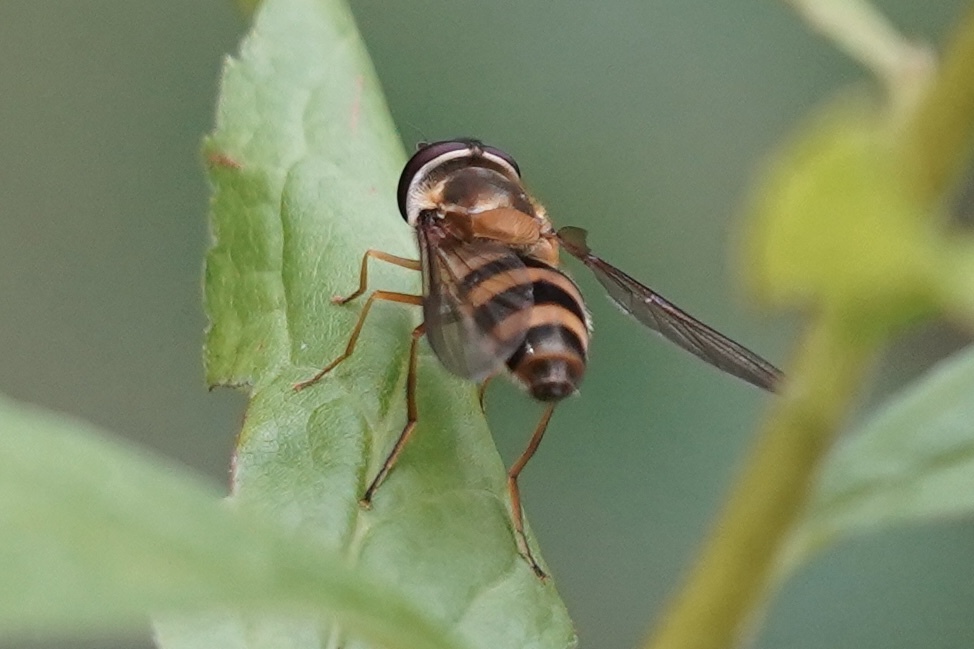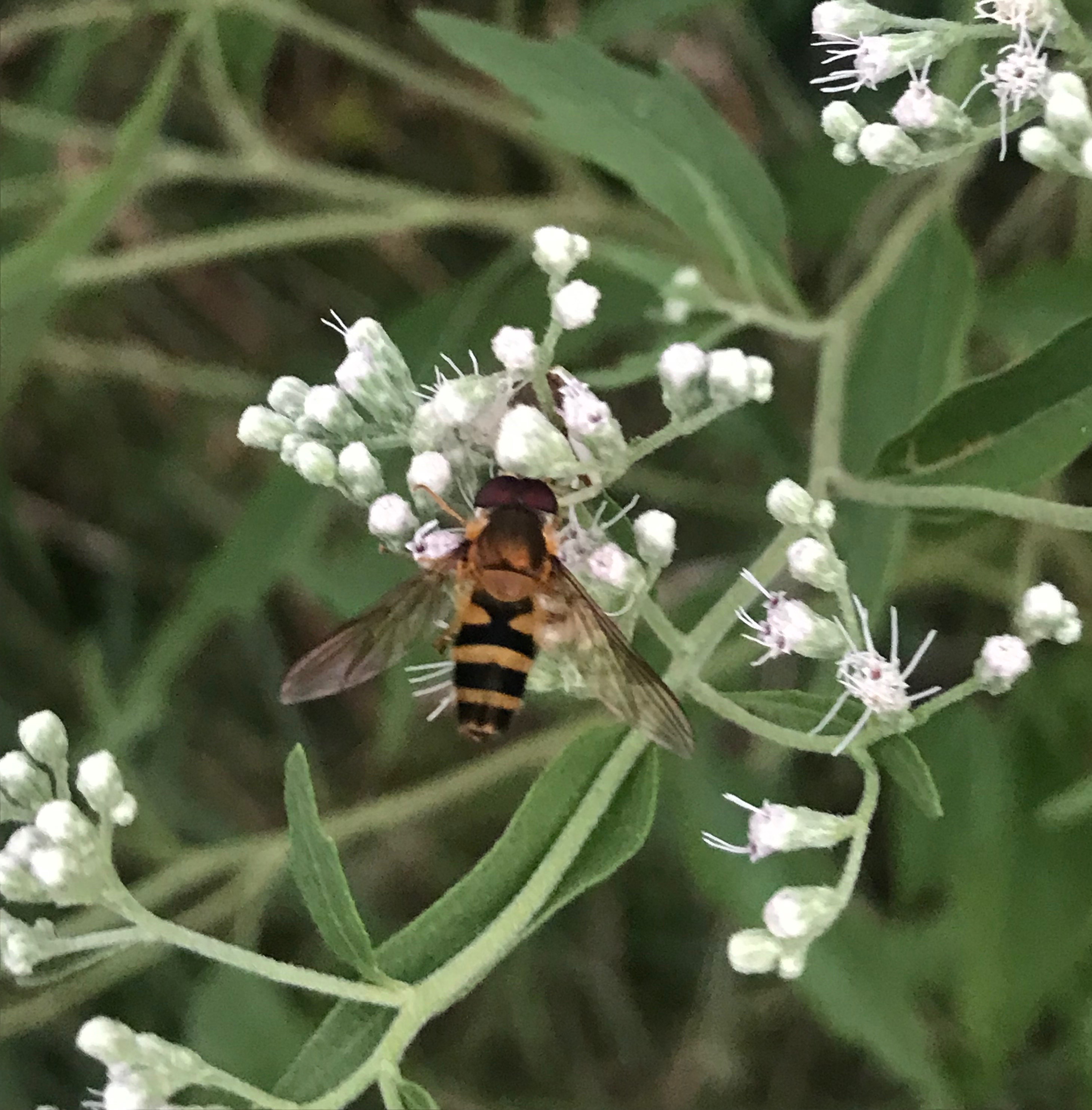Map Snapshot






8 Records
Seasonality Snapshot
Source: Wikipedia
| Epistrophe grossulariae | |
|---|---|

| |
| Epistrophe grossulariae | |
| Scientific classification | |
| Domain: | Eukaryota |
| Kingdom: | Animalia |
| Phylum: | Arthropoda |
| Class: | Insecta |
| Order: | Diptera |
| Family: | Syrphidae |
| Genus: | Epistrophe |
| Species: | E. grossulariae
|
| Binomial name | |
| Epistrophe grossulariae (Meigen, 1822)
| |
| Synonyms | |
| |
Epistrophe grossulariae is a Holarctic species of hoverfly.[1][2][3]
Description
[edit]External images
For terms see Morphology of Diptera
Wing length 9-12·25 mm. Thorax dull greenish. Tergite 4 with entire yellow band. At least anterior femora dark at base, sometimes hind also. Frons black above lunule and at least half black-haired. Female has a bronzy-green area on upper part of frons. Yellow bands on tergites 3 and 4 straight. Tergite 5 with black band.
[4]
[5]
[6][7] Male genitalia are figured by Hippa (1968) .[8]
The larva is illustrated by Rotheray (1993) [9]
Distribution
[edit]Palaearctic and Nearctic Fennoscandia South to Spain, Italy and Yugoslavia. Ireland eastwards through Turkey Russia to Kamchatka. In North America from Alaska to Quebec and South to California.[10][11][12]

Biology
[edit]Habitat is deciduous woodland, particularly along rivers and streams, Salix swamp woodland, alpine grassland. Found in clearings, tracksides and beside streams.[13] Flowers visited include white umbellifers, Centaurea, Cirsium, Filipendula, Geranium, Knautia, Rhododendron, Rubus, Sambucus nigra, Succisa, Valeriana.[14] The flight period is end June to September. The larva feeds on aphids.
References
[edit]- ^ Ball, S.G.; Morris, R.K.A. (2000). Provisional atlas of British hoverflies (Diptera, Syrphidae). Monks Wood, UK: Biological Record Centre. pp. 167 pages. ISBN 1-870393-54-6.
- ^ Morris, Roger K. A. (1999). Hoverflies of Surrey. Surrey Wildlife Trust. p. 244. ISBN 0-9526065-3-4.
- ^ Stubbs, Alan E.; Falk, Steven J. (1983). British Hoverflies: An Illustrated Identification Guide. British Entomological & Natural History Society. p. 253, xvpp.
- ^ Van Veen, M.P. (2004). Hoverflies of Northwest Europe, Identification Keys to the Syrphidae (hardback). Utrecht: KNNV Publishing. p. 254. ISBN 90-5011-199-8.
- ^ Van der Goot,V.S. (1981) De zweefvliegen van Noordwest - Europa en Europees Rusland, in het bijzonder van de Benelux. KNNV, Uitgave no.32: 275pp. Amsterdam.
- ^ Bei-Bienko, G.Y. & Steyskal, G.C. (1988) Keys to the Insects of the European Part of the USSR, Volume V: Diptera and Siphonaptera, Part I. Amerind Publishing Co., New Delhi. ISBN 81-205-0080-6.
- ^ Coe, R.L. (1953) Diptera: Syrphidae. Handbks.ident.Br.insects, 10(1): 1-98. R.ent.Soc.London. pdf Archived 2018-10-04 at the Wayback Machine
- ^ Hippa, H. (1968) A generic revision of the genus Syrphus and allied genera (Diptera: Syrphidae) in the Palearctic region, with descriptions of the male genitalia. Acta Ent.Fenn., 25: 1-94.
- ^ Rotheray G., 1993 Colour Guide to Hoverfly Larvae Diptera, Syrphidae in Britain and Europe Dipterists Forum pdf
- ^ Fauna Europaea
- ^ Peck, L.V. (1988) Syrphidae. In: Soos, A. & Papp, L. (eds.) Catalogue of Palaearctic Diptera, 8: 11-230. Akad.Kiado, Budapest.
- ^ Vockeroth, J. R. (1992). The Flower Flies of the Subfamily Syrphinae of Canada, Alaska, and Greenland (Diptera: Syrphidae). Part 18. The Insects and Arachnids of Canada. Ottawa, Ontario: Canadian Government Pub Centre. pp. 1–456.
- ^ Speight, M.C.D. (2011). "Species accounts of European Syrphidae (Diptera)" (PDF). Syrph the Net, the Database of European Syrphidae. 65: 285pp.
- ^ de Buck, N. (1990) Bloembezoek en bestuivingsecologie van Zweefvliegen (Diptera, Syrphidae) in het bijzonder voor België. Doc.Trav. IRSNB, no.60, 1–167.
